
Native American Heritage Month, also referred to as National American Indian and Alaska Native Heritage Month, is a month-long celebration of the contributions made by Natives to the establishment and growth of the United States, as well as a chance to honor the culture and traditions of the numerous tribes that inhabit North America.
The term Native American is used often in the United States, but it is falling out of favor with some Native groups. Other acceptable terms include Native, Indigenous, Indigenous American, and American Indian (not to be confused with Indian-American). When possible, it is preferable to use a person's specific tribal name in place of the broader terms. More information about appropriate terminology in reference to Native peoples can be found on the National Museum of the American Indian website.
American Indians have inhabited Florida for more than 12,000 years, with the first Natives, known as Paleoindians, migrating south through the North American continent until they crossed through the Florida peninsula. Native groups settled throughout the state, with the largest groups being the Timucua in north Florida and the Calusa in the southern areas of the state. Smaller tribes made up these groups since there was a shared language and culture between them, and more settled in other areas of Florida.
Despite being the original stewards of the land throughout North America, European colonization has left Natives with only sections of the land they've lived on for thousands of years. The majority of this land is known as a reservation and usually needs to be approved and granted by the federal government. A Native reservation is defined as “an area of land reserved for a tribe or tribes under treaty or other agreement with the United States, executive order, or federal statute or administrative action as permanent tribal homelands, and where the federal government holds title to the land in trust on behalf of the tribe.”
Indigenous-led efforts to start conversations about settler-Indigenous relations and colonialism have led to the creation of resources like the Native Land Map, which provides information about the various Native groups that live or once lived in specific areas. Acknowledging that you may live on Native land and learning more about the history of the people who once managed it is one way to honor Native American Heritage Month.

Research Native peoples and their various cultures in the library catalog, Florida Electronic Library, and World Book databases. Learn more about prominent Natives in history with Gale in Context: Biography.
Music albums by Native artists are available through the library's music collection on hoopla. Both educational and entertainment videos about Natives are available for checkout. Explore Native artwork with the Native American Art Magazine, available through Libby.
Library Programs
Gainesville Native American Style Flute Circle
Wednesday, Nov. 8, at 5 p.m. at the Millhopper Branch
Join the Gainesville Native American Flute Players to talk about upcoming events and play music together, as well as meet new people who might want to join in the fun!
- Adult Fiction
- Image
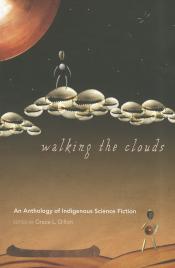 Image
Image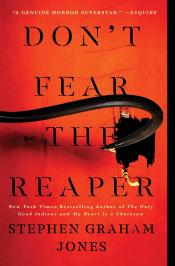
Walking The Clouds: An Anthology of Indigenous Science Fiction
In this first-ever anthology of Indigenous science fiction, Grace Dillon collects some of the finest examples of the craft with contributions by Native American, First Nations, Aboriginal Australian, and New Zealand Maori authors. The collection includes seminal authors such as Gerald Vizenor, historically important contributions often categorized as "magical realism" by authors like Leslie Marmon Silko and Sherman Alexie, and authors more recognizable to science fiction fans like William Sanders and Stephen Graham Jones. Dillon's engaging introduction situates the pieces in the larger context of science fiction and its conventions.
Don't Fear The Reaper - Stephen Graham Jones
Four years after her tumultuous senior year, Jade Daniels is released from prison right before Christmas when her conviction is overturned. But life beyond bars takes a dangerous turn as soon as she returns to Proofrock. Convicted serial killer, Dark Mill South, seeking revenge for thirty-eight Dakota men hanged in 1862, escapes from his prison transfer due to a blizzard, just outside of Proofrock, Idaho.
Image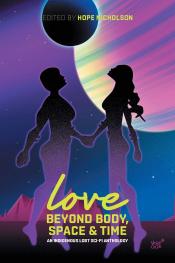 Image
Image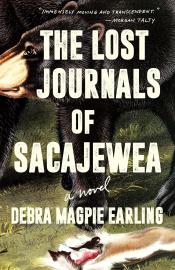
Love: Beyond Body, Space, and Time: An Indigenous LGBT Sci-Fi Anthology
Love Beyond Body, Space, and Time is a collection of indigenous science fiction and urban fantasy focusing on LGBT and two-spirit characters. These stories range from a transgender woman undergoing an experimental medication that enables her to live the lives of her maternal ancestors to young lovers separated through decades and meeting in the future. These are stories of machines and magic, love and self-love.
The Lost Journals of Sacajawea - Debra Magpie Earling
From the award-winning author of Perma Red comes a devastatingly beautiful novel that challenges prevailing historical narratives of Sacajewea.
Stolen from her village and then gambled away to a French Canadian trapper and trader, Sacajewea, determined to survive and triumph, crosses a vast and brutal terrain with her newborn son, the white man who owns her and a company of men who wish to conquer the world she loves.
- Adult Non-Fiction
- Image
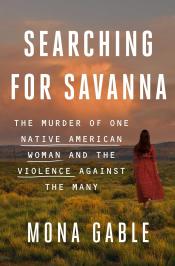 Image
Image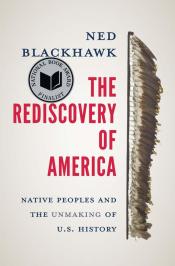
The Rediscovery of America: Native Peoples and The Unmaking of U.S. History - Ned Blackhawk
A sweeping and overdue retelling of U.S. history recognizes that Native Americans are essential to understanding the evolution of modern America.
Searching For Savanna: The Murder of One Native American Woman and the Violence Against The Many - Mona Gable
A gripping and illuminating investigation into the disappearance of Savanna LaFontaine-Greywind when she was eight months pregnant, highlighting the shocking epidemic of violence against Native American women in America and the societal ramifications of government inaction.
With pathos and compassion, Searching for Savanna confronts this history of dehumanization toward Indigenous women and the government’s complicity in the crisis. Featuring in-depth interviews, personal accounts, and trial analysis, Searching for Savanna investigates these injustices and the decades-long struggle by Native American advocates for meaningful change.Image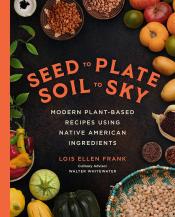 Image
Image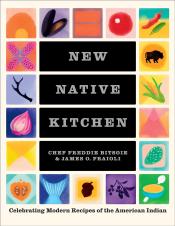
Seed To Plate, Soil To Sky: Modern Plant-Based Recipes Using Native American Ingredients - Lois Ellen Frank
Introducing the “Magic 8” Native American plants—corn, beans, squash, chile, tomato, potato, vanilla and cacao, which forever changed the world’s cuisines, this mouthwatering—and eye-opening—celebration of Indigenous foods and Southwestern flavors presents more than 100 plant-based recipes to transform your cooking.
New Native Kitchen: Celebrating Modern Recipes of the American Indian - Freddie Bitsoie
From Freddie Bitsoie, the former executive chef at Mitsitam Native Foods Cafâe at the Smithsonian's National Museum of the American Indian, and James Beard Award-winning author James O. Fraioli, New Native Kitchen is a celebration of Indigenous cuisine.Accompanied by original artwork by Gabriella Trujillo and offering delicious dishes like Cherrystone Clam Soup from the Northeastern Wampanoag and Spice-Rubbed Pork Tenderloin from the Pueblo peoples, Bitsoie showcases the variety of flavor and culinary history on offer from coast to coast, providing modern interpretations of 100 recipes that have long fed this country
- Young Adult Fiction
- Image
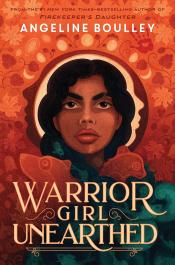 Image
Image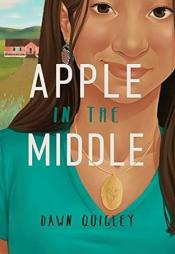
Warrior Girl Unearthed - Angeline Boulley
With the rising number of missing Indigenous women, her family’s involvement in a murder investigation and grave robbers profiting off her Anishinaabe tribe, Perry takes matters into her own hands to solve the mystery and reclaim her people’s inheritance.
Apple in the Middle - Dawn Quigley
Apple Starkington turned her back on her Native American heritage the moment she was called a racial slur for someone of white and Indian descent, not that she really even knew how to be an Indian in the first place. Too bad the white world doesn't accept her either. And so begins her quirky habits to gain acceptance. Apple's name, chosen by her Indian mother on her deathbed, has a double meaning: treasured apple of my eye, but also the negative connotation a person who is red, or Indian, on the outside, but white on the inside. After her wealthy father gives her the boot one summer, Apple reluctantly agrees to visit her Native American relatives on the Turtle Mountain Indian Reservation in northern North Dakota for the first time. Apple learns to deal with the culture shock of Indian customs and the Native Michif language, while she tries to find a connection to her dead mother. She also has to deal with a vengeful Indian man who loved her mother in high school but now hates Apple because her mom married a white man. Bouncing in the middle of two cultures, Apple meets her Indian relatives, shatters Indian stereotypes, and learns what it means to find her place in a world divided by color.
Image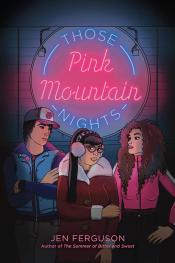 Image
Image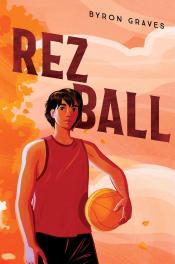
Those Pink Mountain Nights - Jen Ferguson
While working at Pink Mountain Pizza, three teens--overachiever Berlin, high school dropout Cameron and rich girl Jessie--find their weekend taking unexpected turns, forcing them all to acknowledge the various ways they've been hurt--and how much they need each other to hold it all together.
When the varsity basketball team members take him under their wing, Tre Brun, representing his Ojibwe reservation, steps into his late brother’s shoes as star player but soon learns he can’t mess up — not on the court, not in school and not in love.
- Young Adult Non-Fiction
- Image
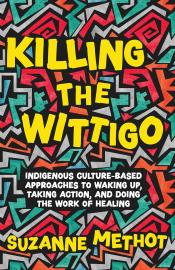 Image
Image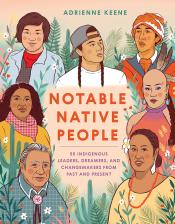
Notable Native People: 50 Indigenous Leaders, Dreamers, and Changemakers From Past and Present - Adrienne Keene
An accessible and educational illustrated book profiling 50 notable American Indian, Alaska Native, and Native Hawaiian people, from NBA star Kyrie Irving of the Standing Rock Lakota to Wilma Mankiller, the first female principal chief of the Cherokee Nation. Celebrate the lives, stories, and contributions of Indigenous artists, activists, scientists, athletes, and other changemakers in this illustrated collection. Also offers accessible primers on important Indigenous issues, from the legacy of colonialism and cultural appropriation to food sovereignty, land and water rights, and more. An indispensable read for people of all backgrounds seeking to learn about Native American heritage, histories, and cultures, Notable Native People will educate and inspire readers of all ages.
Killing The Wittigo: Indigenous Culture-Based Approaches To Waking Up, Taking Action, and Doing The Work of Healing - Suzanne Methot
An unflinching reimagining of Legacy: Trauma, Story, and Indigenous Healing for young adults. Written specifically for young adults, reluctant readers, and literacy learners, Killing the Wittigo explains the traumatic effects of colonization on Indigenous people and communities and how trauma alters an individual’s brain, body, and behavior. It explores how learned patterns of behavior — the ways people adapt to trauma to survive — are passed down within family systems, thereby affecting the functioning of entire communities. The book foregrounds Indigenous resilience through song lyrics and as-told-to stories by young people who have started their own journeys of decolonization, healing, and change. It also details the transformative work being done in urban and on-reserve communities through community-led projects and Indigenous-run institutions and community agencies. These stories offer concrete examples of the ways in which Indigenous peoples and communities are capable of healing in small and big ways — and they challenge readers to consider what the dominant society must do to create systemic change. Full of bold graphics and illustration, Killing the Wittigo is a much-needed resource for Indigenous kids and the people who love them and work with them.
Image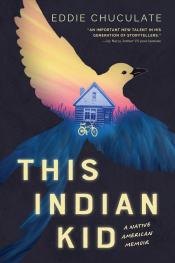 Image
Image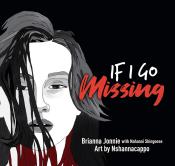
This Indian Kid: A Native American Memoir - Eddie Chuculate
Growing up impoverished and shuttled between different households, it seemed life was bound to take a certain path for Eddie Chuculate. Despite the challenges he faced, his upbringing was rich with love and bountiful lessons from his Creek and Cherokee heritage, deep-rooted traditions he embraced even as he learned to live within the culture of white, small-town America that dominated his migratory childhood.
If I Go Missing - Brianna Jonnie and Nahanni Shingoose
If I Go Missing is derived from excerpts of a letter that went viral and was also the basis of a documentary film. In her letter, Jonnie calls out the authorities for neglecting to immediately investigate missing Indigenous people and urges them to "not treat me as the Indigenous person I am proud to be" if she were to be reported missing. Indigenous artist Neal Shannacappo provides the artwork. Through his illustrations, he imagines a situation in which a young Indigenous woman does disappear, portraying the reaction of her community, her friends, the police, and media.
- Children's Fiction
- Image
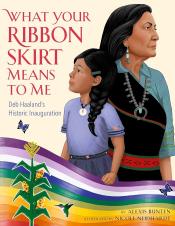 Image
Image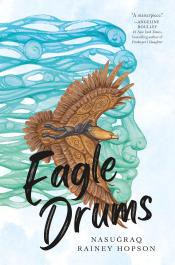
What Your Ribbon Skirt Means To Me: Deb Haaland's Historic Inauguration - Alexis Bunten
On March 18, 2021, Pia and the other children at the Indigenous community center were filled with Native pride as they watched Secretary Deb Haaland in her ribbon skirt at the White House becoming the first Native American to serve as a cabinet secretary.
Eagle Drums - Nasug̊raq Rainey Hopson
This magical origin story of the Iñupiaq Messenger Feast, a Native Alaskan tradition, follows a young, skilled hunter who, confronted by a terrifying eagle god, is led on a harrowing journey during which he learns unexpected lessons about the natural world.
Image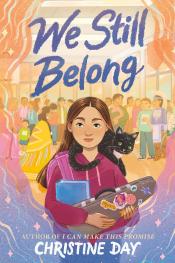 Image
Image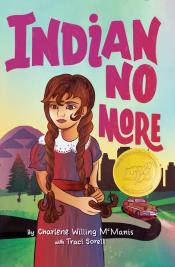
We Still Belong - Christine Day
Wesley's hopeful plans for Indigenous Peoples' Day (and asking her crush to the dance) go all wrong--until she finds herself surrounded by the love of her Indigenous family and community at the intertribal powwow.
Indian No More - Charlene Willing McManis
When Regina's Umpqua tribe is legally terminated and her family must relocate from Oregon to Los Angeles, she goes on a quest to understand her identity as an Indian despite being so far from home.
- Children's Non-Fiction
- Image
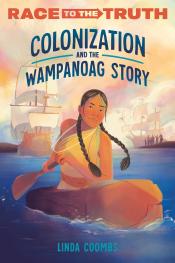 Image
Image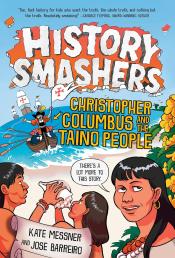
Colonization and the Wampanoag Story - Linda Coombs
Until now, you've only heard one side of the story: the "discovery" of America told by Christopher Columbus, the Pilgrims, and the Colonists. Here's the true story of America from the Indigenous perspective.
When you think about the beginning of the American story, what comes to mind? Three ships in 1492, or perhaps buckled hats and shoes stepping off of the Mayflower, ready to start a new country. But the truth is, Christopher Columbus, the Pilgrims, and the Colonists didn't arrive to a vast, empty land ready to be developed. They arrived to find people and communities living in harmony with the land they had inhabited for thousands of years, and they quickly disrupted everything they saw.
From its "discovery" by Europeans to the first Thanksgiving, the story of America's earliest days has been carefully misrepresented. Told from the perspective of the New England Indigenous Nations that these outsiders found when they arrived, this is the true story of how America as we know it today began.History Smashers: Christopher Columbus and the Taino People - Kate Messner and Jose Barreiro
In 1492, Christopher Columbus sailed across the ocean and discovered America. Right? Wrong! Columbus never actually set foot in what is now the United States. His voyages took him to islands in the Caribbean and along the coast of South America. The truth is, when Columbus first arrived, Indigenous peoples, including the Taino, had been living there for thousands of years, raising their families, running their societies, and trading with their neighbors. He didn't "discover" the lands at all! And his name? Not even really Christopher Columbus!
Image
Informative text in this engaging series presents a comprehensive look at the lives of Native Americans from the first contact with Europeans to the present, and includes fascinating facts about the way these diverse people function, how they celebrate and practice their religious beliefs, and first-person accounts of Native American life and educational activities that help make these cultures relatable to readers.
Image
Each book in this series introduces readers to a Native American nation. Informative, easy-to-read text and engaging photos draw in readers as they learn about the nation's homeland and traditional ways of life, including social structure, homes, food, art, clothing, and more. Also discussed is contact with European and American settlers, as well as how the people keep their culture alive today.
- Notable American Indian Authors
N. Scott Momaday [Kiowa]
Image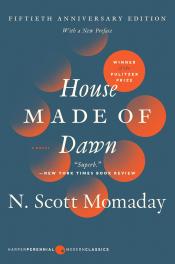 Image
Image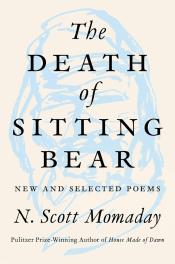
A novel of a proud stranger in his native land. He was a young American Indian named Abel, and he lived in two worlds. One was that of his father, wedding him to the rhythm of the seasons, the harsh beauty of the land, the ecstasy of the drug called peyote. The other was the world of the twentieth century, goading him into a compulsive cycle of sexual exploits, dissipation, and disgust. Home from a foreign war, he was a man being torn apart, a man descending into hell.
One of the most important and unique voices in American letters, distinguished poet, novelist, artist, teacher, and storyteller N. Scott Momaday was born into the Kiowa tribe and grew up on Indian reservations in the Southwest. The customs and traditions that influenced his upbringing-most notably the Native American oral tradition-are the centerpiece of his work. This luminous collection demonstrates Momaday's mastery and love of language and the matters closest to his heart. To Momaday, words are sacred; language is power. Spanning nearly fifty years, the poems gathered here illuminate the human condition, Momaday's connection to his Kiowa roots, and his spiritual relationship to the American landscape. The title poem, "The Death of Sitting Bear" is a celebration of heritage and a memorial to the great Kiowa warrior and chief. "I feel his presence close by in my blood and imagination," Momaday writes, "and I sing him an honor song." Here, too, are meditations on mortality, love, and loss, as well as reflections on the incomparable and holy landscape of the Southwest. The Death of Sitting Bear evokes the essence of human experience and speaks to us all.
Rebecca Roanhorse [Ohkay Owingeh]
Image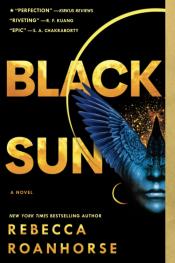 Image
Image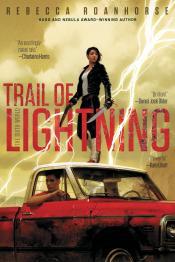
When a small town needs her help in finding a missing girl, Maggie Hoskie, a Dinetah monster hunter and supernaturally gifted killer, reluctantly enlists the help of an unconventional medicine man to uncover the terrifying truth behind the disappearance—and her own past.
From the New York Times bestselling author of Star Wars: Resistance Reborn comes the first book in the Between Earth and Sky trilogy, inspired by the civilizations of the Pre-Columbian Americas and woven into a tale of celestial prophecies, political intrigue, and forbidden magic. A god will return When the earth and sky converge Under the black sun In the holy city of Tova, the winter solstice is usually a time for celebration and renewal, but this year it coincides with a solar eclipse, a rare celestial event proscribed by the Sun Priest as an unbalancing of the world. Meanwhile, a ship launches from a distant city bound for Tova and set to arrive on the solstice. The captain of the ship, Xiala, is a disgraced Teek whose song can calm the waters around her as easily as it can warp a man's mind. Her ship carries one passenger. Described as harmless, the passenger, Serapio, is a young man, blind, scarred, and cloaked in destiny. As Xiala well knows, when a man is described as harmless, he usually ends up being a villain. Crafted with unforgettable characters, Rebecca Roanhorse has created an epic adventure exploring the decadence of power amidst the weight of history and the struggle of individuals swimming against the confines of society and their broken pasts in the most original series debut of the decade.
Joseph Bruchac [Nulhegan Abenaki]
Image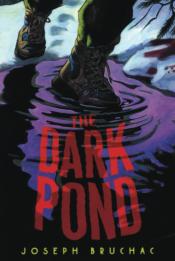 Image
Image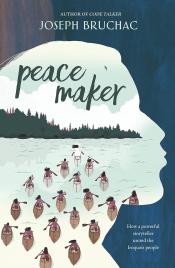
After he feels a mysterious pull drawing him toward a dark, shadowy pond in the woods, Armie looks to old Native American tales for guidance about the dangerous monster lurking in the water.
A twelve-year-old Iroquois boy rethinks his calling after witnessing the arrival of a mystical figure with a message of peace in this historical novel based on the creation of the Iroquois Confederacy.
Joy Harjo [Mvskoke]
Image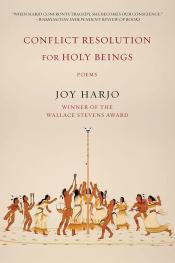 Image
Image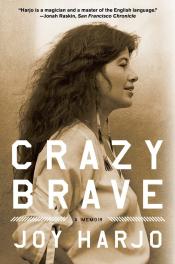
A memoir from the Native American poet describes her youth with an abusive stepfather, becoming a single teen mom, and how she struggled to finally find inner peace and her creative voice.
Conflict Resolution for Holy Beings
The title of Harjo's long-awaited new collection provokes such questions as Why would holy beings be in conflict?, which Harjo answers by suggesting we are the holy ones at odds because we have forgotten all that is holy about us. These poem-songs have a magical quality akin to incantation as they conjure up a collective remembering. Through them, Harjo seems to sing the holy back into the world, sing the world's beauty and love back into being, sing praise for nature's songs, sing self, history, and humanity into a form we can recognize and (hopefully) revere again. Song becomes the vehicle for conflict resolution, built of jazz riffs, blues rhythms, and Native American chants. Harjo's ancestors here are both hereditary and chosen for their musical, poetic, and mythical influences. These honest, innovative poems return us to the essential recognition of a time when "There was no ‘I' or ‘you.' / There was us; there was ‘we.'" Harjo's inspired collection hits home when it tells us, "This is about getting to know each other.
Sherman Alexie [Salish; Spokane]
Image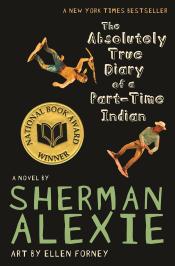 Image
Image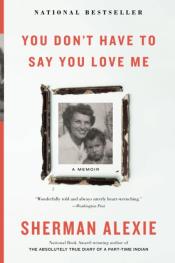
The Absolutely True Diary of a Part-Time Indian
Budding cartoonist Junior leaves his troubled school on the Spokane Indian Reservation to attend an all-white farm town school where the only other Indian is the school mascot.
You Don't Have to Say You Love Me
Presents a literary memoir of poems, essays, and intimate family photos that reflect on the author's complicated relationship with his mother and his disadvantaged childhood on a Native American reservation.